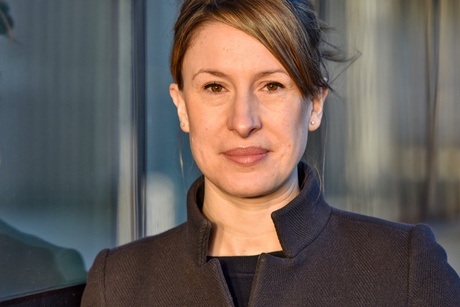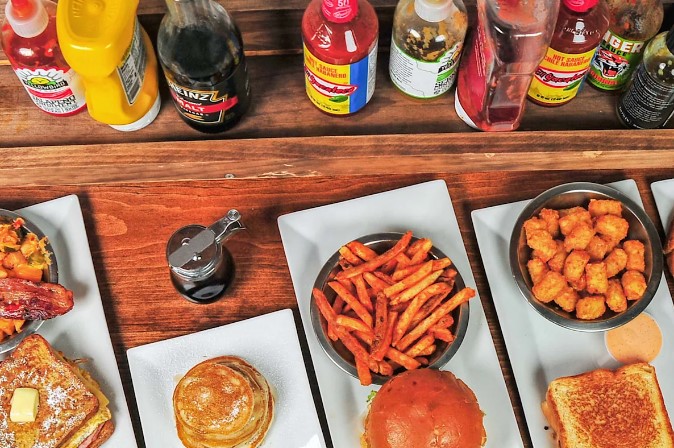Building Equity in Biomedical Research

“We have to create these opportunities,” Reede said. “The Visiting Research Internship Program provides the opportunities for these students to start to ask: Is there a place for me in this?”
Harvard Catalyst, the university’s clinical and translational science center, coordinates the VRIP in partnership with the HMS Office for Diversity Inclusion and Community Partnership and with funding from the National Center for Advancing Translational Sciences (NCATS), a program of the National Institutes of Health.
NCATS places a strong emphasis on integrating diversity and inclusion throughout its national programs. Along with an annual faculty fellowship, VRIP is a core program.
Opening doors, enlightening the path
For Gerald Lilly, now a physician, a VRIP summer in 2015 provided an opportunity to work on CRISPR gene editing and the experience sparked a love of science that Lilly is still chasing.
A Black man from the Midwest, Lilly was a second-year med student interested in exploring a research career when he was accepted into the program to collaborate with oncologist Daniel Bauer, HMS associate professor of pediatrics and the Donald S. Frederickson, MD Associate Professor of Pediatrics at Boston Children’s Hospital, who was doing work in cancer genetics.
Today, Lilly stands out in an elite group of Americans who’ve been named Presidential Management Fellows by a federal leadership-development program started by President Jimmy Carter in the 1970s.
The role places Lilly at the heart of pandemic preparedness, working on vaccine quality control at the National Institute of Allergy and Infectious Diseases (NIAID).
VRIP “enlightened my path,” Lilly said in an interview.
“It helped me to understand that I really wanted to do science with my MD and get more experience in the lab. I didn’t see direct patient care as my primary role, and that’s not what I’m doing in my career. I want to affect people by helping advance the science.”
Another former VRIP participant, Ross O’Hagan from the 2019 cohort, said the program convinced him to dig deeper into a career in translational science.
A student at the Icahn School of Medicine at Mount Sinai, he went on to earn a spot in the NIH Medical Research Scholars program and became immersed in pioneering translational work in the NIH lab of Lasker Clinical Research Scholar Nehal Mehta.
VRIP “made me like research so much that I wanted to train for a whole extra year,” O’Hagan said, laughing.
Living the academic life
VRIP targets first- and second-year medical students who are at critical junctures in their careers and links them with an HMS-affiliated clinician-scientist as research mentor.
Working on-site in Boston for two months, students are immersed in real-world academic research along with an intensive curriculum of seminars that cover research methods and practices.
Internationally recognized cancer researcher Marsha Moses, the HMS Julia Dyckman Andrus Professor of Surgery, whose lab is at Boston Children’s, was a first-time VRIP mentor in 2002, hosting Michael Dang, a medical student from the Texas Tech University Health Sciences Center.
As a result, Dang learned to work with cell cultures in a state-of-the-art wet-bench laboratory under the immediate tutelage of Roopali Roy, an HMS instructor in surgery in Moses’ lab at Boston Children’s.
In addition to working on his research project and immersing himself in the Harvard Catalyst curriculum, Dang attended weekly lab meetings and journal clubs. He was one of eight VRIP awardees in the 2022 session working in labs across the HMS campus this past summer.
“It’s important for young folks to understand what it means to do science for a living,” Moses said.
“To spend time working at the bench with really smart, dedicated, inspired young women and men who at the end of the day are not very different than they are, is invaluable,” she said.
That’s especially true, Moses said, for members of groups historically underrepresented in medicine, and for young women, who may not have had access to the same pool of mentors as more privileged students have.
Mentors who ‘get it’
Gezzer Ortega, an HMS instructor in surgery at Brigham and Women’s Hospital, knows what it’s like to work your way into an academic research career without a road map or mentors to guide you.
As the eldest son of Dominican immigrants who spoke only Spanish, and the first in his family to go to college, he figured out mostly for himself how to get into and navigate college, medical school, and then graduate school for his master of public health program. When Ortega sees students who come from similar circumstances, he gets it.
Ortega saw aspects of his own path in Bryan Torres, a second-year medical student at Tulane University who grew up in an impoverished Hispanic community with immigrant, non-English speaking parents. Ortega jumped at the opportunity to help bring a fellow Latino into clinical science.
Torres said knowing he was going to be matched with a mentor who comes from a similar background was a “huge motivation” in applying for a VRIP spot.
“As a minority in medicine, it’s sometimes very lonely. It was really hard to find mentors. When I did find them — all of whom were amazing — rarely, if ever, did they look like me,” Torres said.
VRIP 2022 graduate Lacey Foster, a Black woman in her second year at the Keck School of Medicine of USC, echoed that experience, and said it illustrates the need for greater diversity in science and medicine.
“Everyone brings their lived experiences to everything that they do. Having people from different backgrounds and ethnicities bring their perspectives is really instrumental, especially in research, where we’re aiming to answer questions in innovative ways,” she said.
“In medicine, we see a diverse group of patients and I think it is important for our physician population to reflect the diversity in our patients.”
Foster recently started a nonprofit, the Foster Family Foundation, to provide mentorship, guidance, and financial support to students from historically Black colleges and universities who want to go to medical school.
Inclusive mentoring
For underrepresented groups in particular, “mentorship helps open pathways that would otherwise not be available to them,” said Meena Nathan, HMS assistant professor of surgery at Boston Children’s, who has mentored VRIP participants for the past five years.
“Having a diverse population of caregivers improves health care for underrepresented populations,” she said.
This year Mischael Saint-Sume, a Black second-year medical student at Morehouse School of Medicine, got a taste of life in Nathan’s pediatric cardiac surgery research lab, sleuthing out the incidence of a serious surgical complication — vocal cord paralysis — in order to understand how to prevent it.
For Nathan, the most rewarding part of participating in the program is being able to help young students like Saint-Sume realize what they want to do.
“I was mentored as a student, as a resident, and as junior faculty, so part of it is giving back,” she said. “You need to help the next generations the same way you were helped when you were starting out.”
That mentor-mentee relationship is built into the DNA of science, said Reede.
“It’s how all of us got to where we are. It’s something that’s always happened in science, but not everybody was included. VRIP is saying, ‘Let’s open this up so more can be a part of this journey.’”





